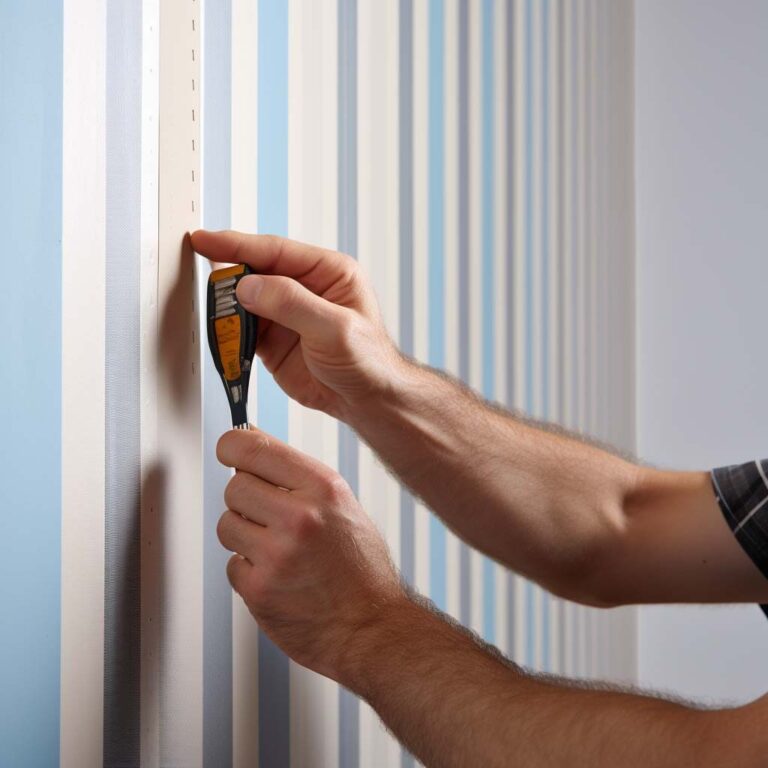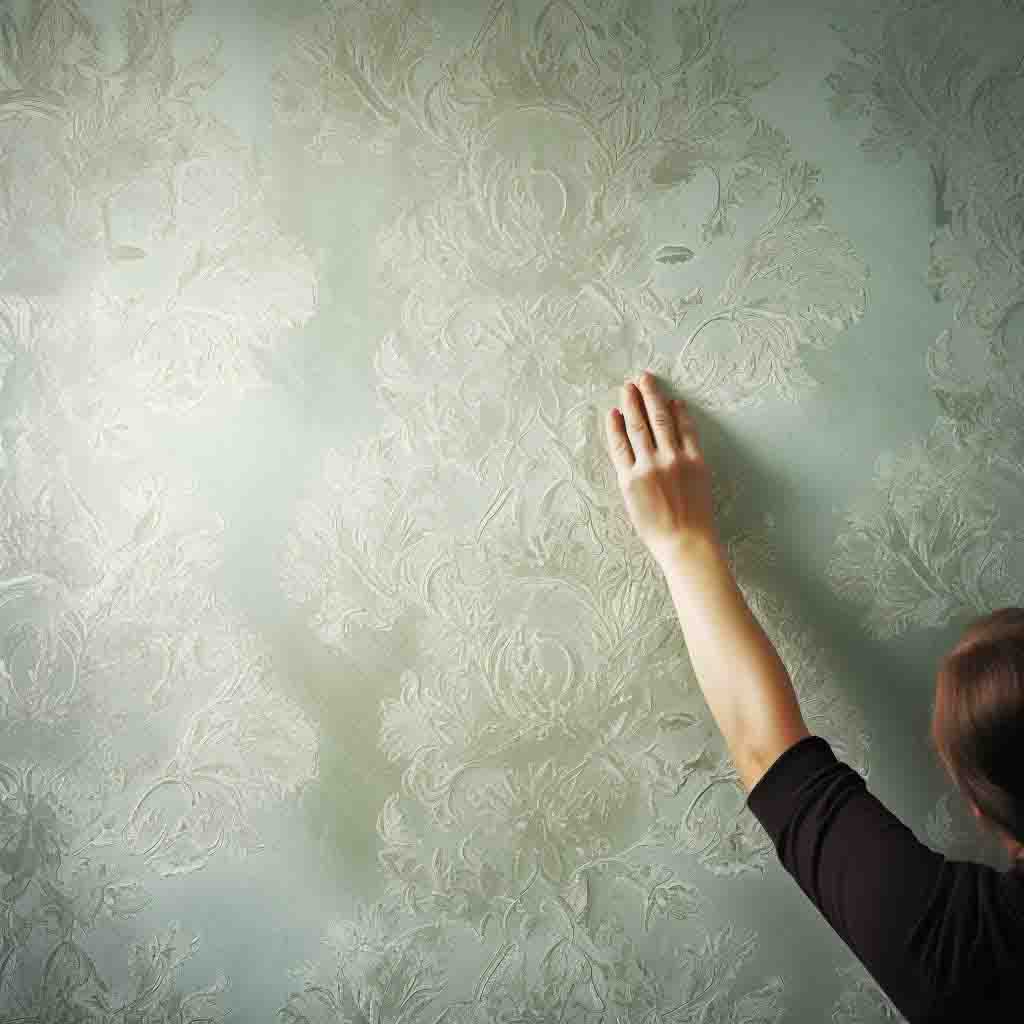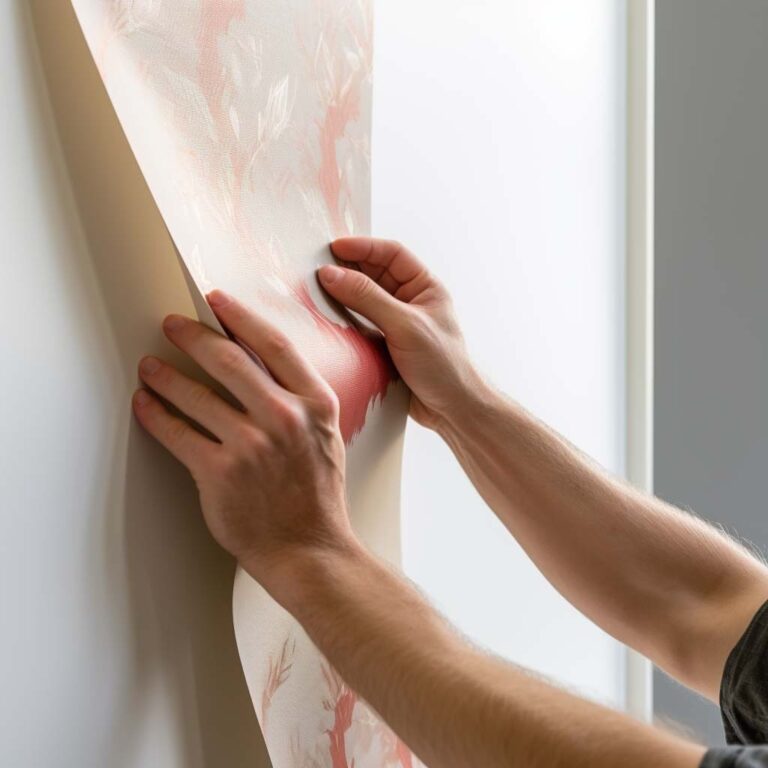DIY wallpaper application: art and practice
Applying wallpaper on your own might seem like a challenging task at first glance, but with proper preparation, instructions, and patience, it becomes achievable. In this article, we will discuss how you can self-install wallpaper, provide step-by-step guidance, and highlight some challenges you might encounter. After reading this, you will understand that DIY Wallpaper Application is both an art and a practice!
Table of Contents
Toggle



Preparation: key to success
Before delving into wallpaper application, thorough preparation is essential. Here are a few steps to follow:
Choosing Wallpaper: Select wallpapers that appeal to you and match your interior design. Consider the texture, color, and pattern of the wallpapers.
Surface Preparation: The surface where you’ll apply the wallpaper should be smooth, clean, and dry. If there are existing wallpapers, remove them. Fill in any uneven spots and sand the surface if needed.
Tools and Materials: Gather necessary tools such as a wallpaper knife, roller or brush for adhesive application, a measuring tape, plumb bob, bucket, specialized wallpaper adhesive, and, of course, the wallpapers themselves.
Step-by-step: how to properly apply wallpaper
Measurement and Cutting: Measure the wall height and cut wallpaper strips with a slight extra length for trimming. Usually, wallpapers are cut about 4-6 inches longer than the wall height.
Applying Adhesive: Apply adhesive to the back of the wallpaper strip using a roller or brush. Fold the strip over and let it sit for a few minutes to allow the adhesive to soak in.
Attaching to the Wall: Align the top of the wallpaper strip with the top of the wall using a plumb bob to ensure vertical alignment. Gradually smooth down the strip, using your hand or a soft sponge to eliminate bubbles.
Removing Bubbles: Gently smooth the wallpaper surface to get rid of bubbles and creases. Use a soft sponge to gently wipe the surface.
Trimming Excess: At the bottom and top of the wall, as well as around corners and windows, cut off excess wallpaper using a knife. Be careful not to damage the wallpaper.
Challenges and why professionals might do better
While self-installing wallpaper is achievable, there are several challenges you might face:
Alignment: Proper alignment and pattern matching can be challenging, especially with wallpapers featuring intricate designs.
Bubbles and Creases: Inexperienced individuals might struggle to avoid bubbles and creases that can affect the final appearance.
Complex Corners and Transitions: Applying wallpaper around windows, doors, and corners can demand extra attention and precision.
Although self-installation is possible, professional wallpaper installers possess experience and skills that help them tackle these challenges more effectively. They also have specialized tools and knowledge that ensure superior results.
Material and manufacturer
Explore our four main services and make the right decision to start cooperating with us. Choose professionals and get high-quality services. We are proud of the trust of our clients and appreciate mutually beneficial cooperation! Contact us and get to know our approach to each client!
Conclusion
DIY wallpaper application is an engaging project that requires careful preparation and patience. By following instructions, satisfactory results can be achieved. However, if you aim for a flawless and professional finish, don’t hesitate to seek experienced professionals who can guarantee the best outcomes through their expertise and skills.
-
How to evaluate a wallpaper installer's work
-
Rasch wallpaper: Benefits and features
-
Choosing the right wallpaper size for your space
-
Caution: Heat and peel and stick wallpaper!
-
Meeting your wallpaper installer: How to be prepared
-
Wallpaper for kitchen island
-
Paper wallpaper
-
Peel and stick wallpaper
-
Nursery wallpaper
-
Removable wallpaper
-
How to select wallpaper for every room
-
Bring your home to life with flower wallpaper
-
How to choose and use white wallpaper
-
Coastal & Nautical Wallpaper
-
Pink Wallpaper
-
Preppy Wallpaper
-
Wallpaper hanging
-
Wood veneer wallcovering
-
Wallpapered ceiling
-
Gucci wallpaper: luxury and style
-
Dark wallpaper is a trend in interior design
-
7 steps to perfect wallpaper
-
Wallpaper in small bathrooms
-
Wallpaper as the key to furniture's second life
-
Personalized wallpaper
-
Kitchen wallpaper
-
Wallpaper installation near me
-
Can you put wallpaper on textured walls
-
Wallpaper for all seasons: adapting to year-round style
-
Bathroom wallpaper: waterproof solutions
-
The art of reviving vintage wallpaper: nostalgic chic
-
Kids' room magic: creative wallpaper ideas for children
-
The Versatility of Metallic Wallpaper: Shimmer and Shine
-
Milton and King wallpaper elegance
-
Accent wall ideas
-
How to install vinyl wallpaper?
-
Ideas for dog rooms
-
Wallpaper installation: DIY or hire professionals?
-
Interior design of dining area
-
Wallpapers vs paint: Pros and Cons for Your Home
-
Best living room wallpaper: inspiration and style
-
The art of transforming spaces
-
Individualized design
-
The psychology of color
-
Tips for choosing lighting
-
Unveiling the world of 3D wall murals
-
Mastering wallpaper installation
-
Unveiling the World of Wallpaper
-
Selecting a contractor
-
American wallpaper manufacturers
-
The artistry of expertise
-
Architect's advice on wallpapers...
-
Secrets of choosing a color palette for wallpaper and decorative plaster
-
DIY wallpaper application: art and practice
-
Trends in wallpaper design
-
Designer tips for combining wallpapers
-
Wallpapers in commercial spaces
-
Wallpaper as a decorative element...
-
Using wallpaper to create a specific mood
-
The history of wallpaper: from the past to the present
-
The art of combining wallpapers and accessories
-
Choosing wallpaper colors and patterns for different rooms
-
Creating accent walls
-
Wallpapers and decorative plasters in modern minimalism
-
Eco wallpapers and decorative materials
-
Taking care of wallpapers and decorative plasters
-
Top designer trends
-
Choosing and selecting wallpapers:...
-
Wallpapers: elevate your interiors with style and elegance
-
The importance of properly preparing walls
-
Challenges of installing prepasted wallpaper
-
Challenges of installing grasscloth wallpaper
-
Problems with installing peel and stick wallpaper
-
Problems of installing vinyl wallpapers on textured walls
